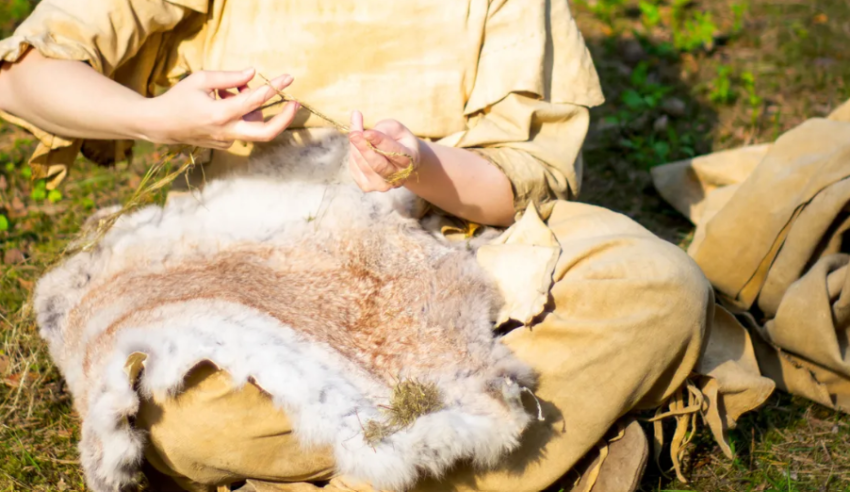Clothes are important for human beings. It protects us from external factors, allows us to express ourselves, and has even created many professions. So when did we start wearing clothes? The origin of clothing is a long standing mystery in human history.
The oldest known piece of clothing
It is difficult to know exactly when Homo sapiens experimented with wearing clothes, archaeological evidence alone does not provide a solid answer. (It also depends on what kind of evidence you consider.)
The earliest direct evidence we have is the Tarkhan Dress, a linen v-neck shirt discovered by Egyptologist Flinders Petrie in a First Dynasty tomb in the ancient Egyptian cemetery Tarkhan. Recent radiocarbon dating has revealed that the garment was produced between 3482 and 3102 BC.
“Didn’t people wear clothes before that?” Archaeologists have yet to find a garment older than the Tarkhan dress. This is not surprising because many clothes today are made from non-biodegradable synthetic fibers, but ancient clothing was made from biodegradable animal or plant-based fibers such as wool or linen. The Tarkhan dress has probably only survived because it was in an extremely dry environment, preventing it from deteriorating.
While the Tarkhan dress is the oldest complete garment found, it is not the oldest evidence of woven textiles. This is where research into when humans gave up regular nudity begins to turn to less direct evidence. At the ancient settlement of Çatalhöyük in Konya, Türkiye, for example, archaeologists have unearthed fragments of plant-based woven textiles, thought to be around 8500 years old, that may indicate that people were producing clothing at that time.
Wild flax fibers were also found in the Dzudzuana Cave in Georgia. Some fibers were twisted and dyed with natural pigments. Researchers suggested that this was evidence of garment sewing. What is remarkable is that these fibers were about 30,000 years old. That’s a pretty significant time for the origin of clothing.
The researchers also used slightly more unusual means to push the time frame back even further – lice. There are two types of lice that feed on humans; head lice nibble on our scalp, while body lice feed on our body. Body lice also live on our clothes, so scientists thought that if they could find out when body lice appeared, they could provide indirect evidence of when humans started wearing clothes.
According to IFL Science, in the studies, researchers compared the DNA of head and body lice to determine when the body louse emerged. They suggest that the body louse could have diverged from the head louse anywhere between 83,000 and 170,000 years ago and that this is when the clothes originated. But this is only a rough estimate.
In short, there is evidence that modern humans wore clothes, and there are signs that Neanderthals may have worn fur. But the further back in history we go, the harder it is to find direct evidence. Perhaps we will never know the real truth about the origin of clothing.
Cover Photo: Daumantas Liekis
